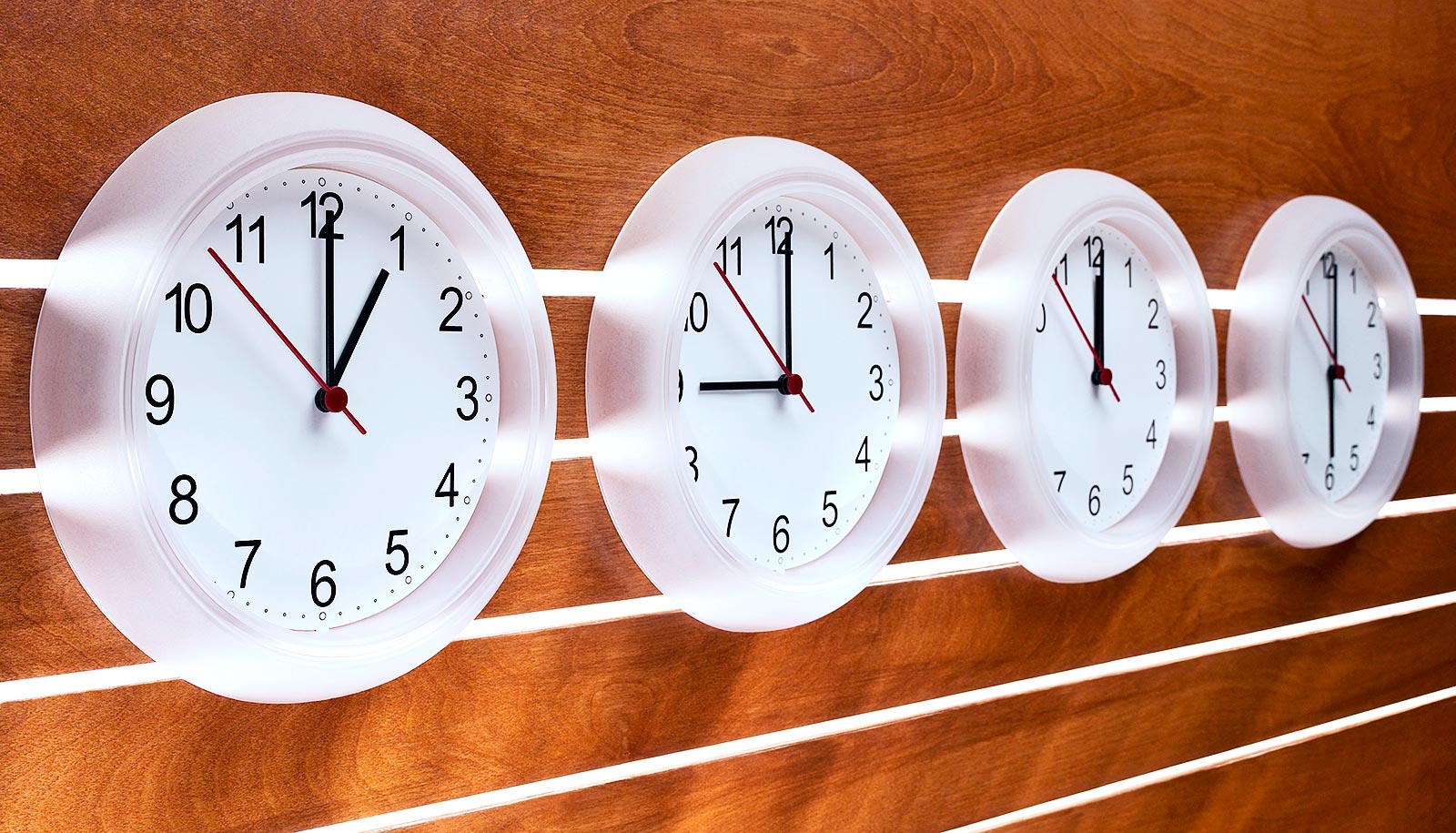Researchers have developed a new simple blood test that can tell the time in your body—which might be very different from the time showing on the clock on the wall.
Previously, measurements this precise could only be achieved through a costly and laborious process of taking samples every hour over a span of multiple hours. The new test, called TimeSignature, requires only two blood draws.
“This is a much more precise and sophisticated measurement than identifying whether you are a morning lark or a night owl,” says lead author Rosemary Braun, assistant professor of preventive medicine (biostatistics) at the Northwestern University Feinberg School of Medicine. “We can assess a person’s biological clock to within 1.5 hours.
“Various groups have tried to get at internal circadian time from a blood test, but nothing has been as accurate or as easy to use as TimeSignature,” Braun says.
In sync, out of sync
Processes in nearly every tissue and organ system in the body are orchestrated by an internal biological clock, which directs circadian rhythm, such as the sleep-wake cycle. Some individuals’ internal clocks are in sync with external time but others are out of sync and considered misaligned.
As reported in the Proceedings of the National Academy of Sciences, the new test will for the first time offer researchers the opportunity to easily examine the impact of misaligned circadian clocks in a range of diseases, including heart disease, diabetes, and Alzheimer’s disease.
When the blood test becomes clinically available, it also will provide doctors with a measurement of an individual’s internal biological clock to guide medication dosing at the most effective time for his or her body.
The software and algorithm are available for free to other researchers so they can assess physiological time in a person’s body. Northwestern has filed for a patent on the blood test.
“This is really an integral part of personalized medicine. So many drugs have optimal times for dosing.”
“This is really an integral part of personalized medicine,” says coauthor Phyllis Zee, chief of sleep medicine in neurology and a professor of neurology. “So many drugs have optimal times for dosing.
“Knowing what time it is in your body is critical to getting the most effective benefits. The best time for you to take the blood pressure drug or the chemotherapy or radiation may be different from somebody else,” Zee says.
The test measures 40 different gene expression markers in the blood and can be taken any time of day, regardless of whether the patient had a good night’s sleep or was up all night. It’s based on an algorithm Braun and colleagues developed by drawing subjects’ blood every two hours and examining which genes were higher or lower at certain times of day. Scientists also used gene expression data from studies conducted at four other centers.
‘Timing is everything’
The scientists then developed a machine-learning method that they used to train a computer to predict the time of day based on patterns in these gene expression measurements. Out of about 20,000 genes researchers measured, these 40 emerged with the strongest signal.
“Timing is everything,” says coauthor Ravi Allada, a professor of neurobiology. “We know if you have disruption of your internal clock, it can predispose you to a range of diseases. Virtually every tissue and organ system are governed by circadian rhythm.
“Before we didn’t have a clinically feasible way of assessing the clock in healthy people and people with disease. Now we can see if a disrupted clock correlates with various diseases and, more importantly, if it can predict who is going to get sick.”
Preclinical research by scientist Joe Bass, chief of endocrinology, metabolism, and molecular medicine previously identified a link between circadian misalignment and diabetes, obesity, depression, heart disease, and asthma.
Modifiable risk
Down the road, Zee envisions improving health and treating disease by aligning people’s circadian clocks that are out of sync with external time.
“Circadian timing is a modifiable risk factor for improving cognitive health, but if we can’t measure it, it’s difficult to know if we’ve made the right diagnosis,” Zee says. “Now we can measure it just like a lipid level.”
The James S. McDonnell Foundation, the Defense Advanced Research Projects Agency, and the Northwestern Center for Circadian and Sleep Medicine funded the work.
Source: Northwestern University



